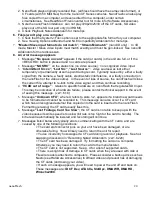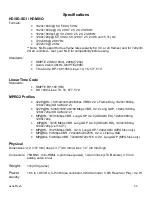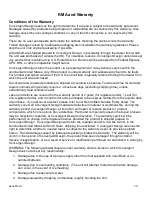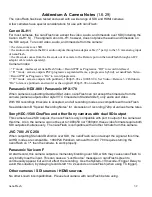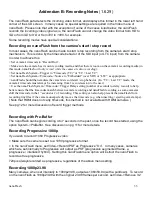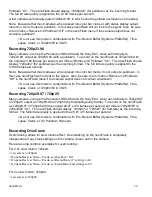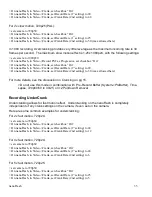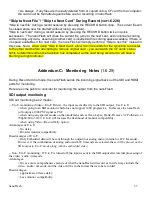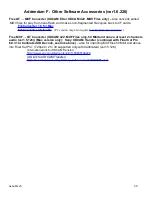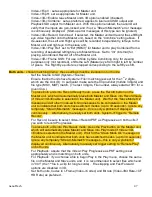
> As always,
if any files are manually deleted from or copied onto a CF card from a computer,
the card must be formatted again before use for recording in nanoFlash.
“Skip to Next File” / “Skip to Next Card” During Record (ver1.6.226)
“Skip to next file” during a record session by pressing the RECORD button once. The current file will
be closed and a new file started (without losing any data).
“Skip to next card” during a record session by pressing the RECORD button twice in quick
succession. The nanoFlash will close the current file, jump to the next card, and continue recording
without losing any data, assuming another card is inserted with recording space available. If there is
no space available on the next card, the nanoFlash will simply perform a “Skip to next file” instead in
this case. Note:
when using “Skip to Next Card”, allow 5 to 10 seconds for the recording to transfer
to the other card before attempting to remove original card – you can watch the CF cards' status
lights to determine when the transition has completed, as the card being recorded to will have a
flashing red light indicator.
Addendum C: Monitoring Notes
(1.6.29)
During Record or Idle mode, the nanoFlash sends the incoming signal back out the SDI and HDMI
ports for monitoring.
Here are some points to consider for monitoring the output from the nanoFlash:
SDI output monitoring
SDI out monitoring has 2 modes:
-- E to E monitoring (Video->E to E Direct): the input is sent directly to the SDI output. Use E to E:
> when going to an SDI monitor which does not support 1080 progressive. In this case the nanoFlash
will output a 1080 PSF signal as PSF.
> when using any special modes on the nanoFlash such as Time-Lapse, Crank, Remove 3:2 Pulldown, or
720p60/50 to 30/25. E to E will increase the likelihood of monitor compatibility.
> when using Video->Record Tally option.
Advantages of E to E:
> No delay.
> Broader monitor compatibility.
Disadvantages of E to E:
> Only Embedded data will be sent through the output (not analog audio / internal or LTC timecode).
However, if the combination of analog audio and LTC timecode are selected, these
will be placed on the
SDI output in E to E mode along with the embedded video.
-- Non- E to E monitoring: If E to E is turned off, the input is sent to the SDI output after internal processing of
the video / audio / timecode.
Advantages:
> Gives a more comprehensive picture of what the nanoFlash will record as it will always include the
video / audio / timecode, and the video will be in the format that is to be recorded.
Disadvantages:
> approximate 4 frame delay.
> Less monitor compatibility.
nanoFlash
37


